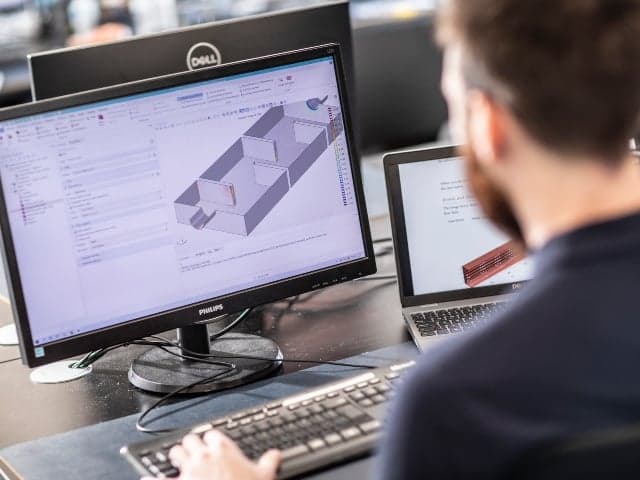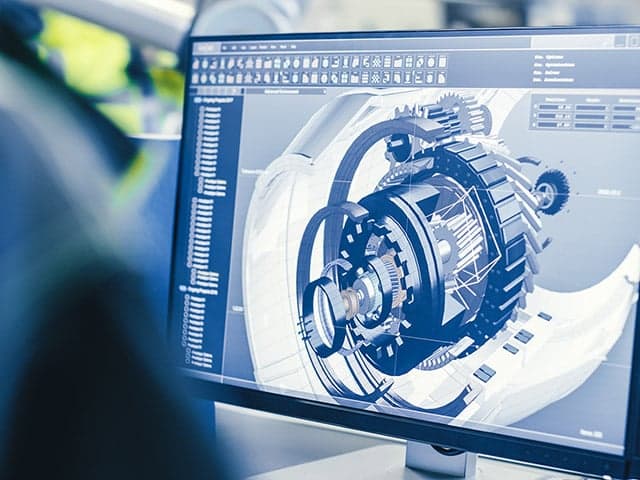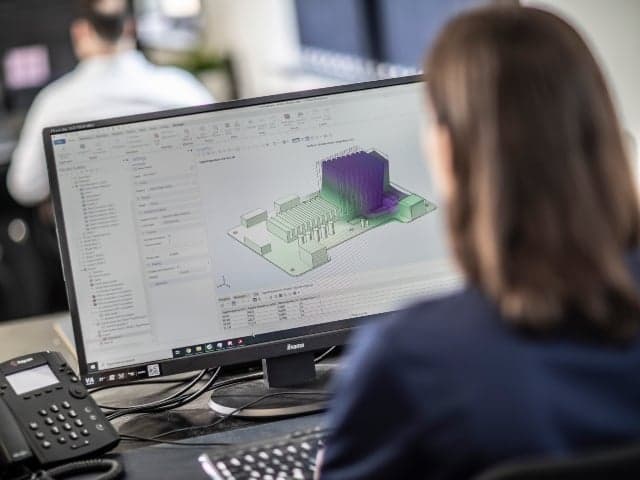Computational Fluid Dynamics
Reduce development costs and accelerate innovation with Element's advanced Computational Fluid Dynamics (CFD) services. Our expert CFD simulation and analysis optimize product designs, reducing reliance on costly prototypes. Gain detailed insights into fluid interactions, heat transfer, and turbulence under real-world conditions. Partner with Element for fast, accurate, and industry-leading engineering solutions.

What is Computational Fluid Dynamics Testing at Element?
Computational Fluid Dynamics (CFD) analysis uses advanced computational methods to simulate and analyze fluid interactions in various environments. At Element, our CFD analysis examines fluid-fluid, fluid-solid, and fluid-gas interactions throughout your components’ lifecycles, delivering detailed insights into flow behavior, thermal performance, and turbulence dynamics.

What can Element offer you for Computational Fluid Dynamics Testing?
Methods and solutions offered
Methods and solutions offered
At Element, we provide fluid-structure interaction analysis, multiphase flow simulation, high-speed flow modeling, turbulence analysis, and heat transfer studies. Our solutions include convective cooling analysis, evaporative cooling simulation, and comprehensive performance verification for your designs.
Components and materials we test
Components and materials we test
Our CFD capabilities span multiple flow types, including low and high-speed flows, incompressible and compressible fluids, Newtonian and non-Newtonian behavior, laminar and turbulent flows, and multiphase systems. We deliver comprehensive analysis for components across aerospace, defense, marine, energy, and transport sectors.
Cutting-edge equipment we use
Cutting-edge equipment we use
- Computational Fluid Dynamics (CFD) software for complex flow modeling
- High-performance computing for large-scale simulations
- Non-destructive testing tools for in-service performance assessment
Which labs offer this service
Which labs offer this service
Our Bristol, Derby, and Houston digital engineering hubs provide global access to our expert capabilities. Find out where your nearest digital engineering hub is on our Locations Page.
Materials and components we test
Your Challenges, Our Solutions
High Development Costs
Extended Development Timelines
Design Performance Uncertainty
Technical Complexity
Element Experts at your service
Why Choose Element

Global Expertise Network
Complete Lifecycle Support
Multi-Industry Experience
Advanced Analysis Capabilities
But don't just take our word for it
See what others have to say about partnering with Element
Frequently asked questions
How do we ensure solution sustainability?
We integrate energy-efficient CFD models and sustainable material analysis to minimize environmental impact while optimizing performance.
Which industries benefit most from CFD simulation?
Our solutions support aerospace, transport, energy, marine, and renewables sectors, ensuring compliance and innovation in high-risk environments.
How does CFD improve operational efficiency?
By leveraging digital twin simulations and predictive analytics, we optimize designs, reduce development costs, and enhance in-service performance.

Explore our global network of labs and find your nearest location
VIEW ALL LOCATIONSRelated services

Digital Engineering Services
Element's Digital Engineering Services enhance reliability, reduce costs, and accelerate innovation through advanced simulations and data-driven insights. Our customized solutions streamline project lifecycles, ensuring optimized designs, regulatory compliance, and future-ready technology.

Advanced Modeling and Simulation Services
Elevate your project with Element's modelling and simulation services, including fluid simulation, CFD, FEA, DEM, and electromagnetics. Our industry-leading expertise ensures precision, cost savings and regulatory compliance at every step.

Discrete Element Method (DEM) Services
Model particle interactions, optimize processes, and improve equipment performance with our Discrete Element Method (DEM) services. Maximize efficiency today.

Finite Element Analysis (FEA) Services
Advanced Finite Element Analysis (FEA) services simulate product performance, optimize designs, and predict failures, addressing structural, thermal, and dynamic challenges across industries with expert solutions.
Speak to our team of experts
The Element Advantage
Our experts have experience with a broad range of flow types, including low- and high-speed flows; incompressible and compressible fluids; Newtonian and non-Newtonian behavior; laminar and turbulent flows; and multiphase systems. We can use CFD simulation and CFD analysis to solve a variety of industrial challenges. Contact our experts for further information.





